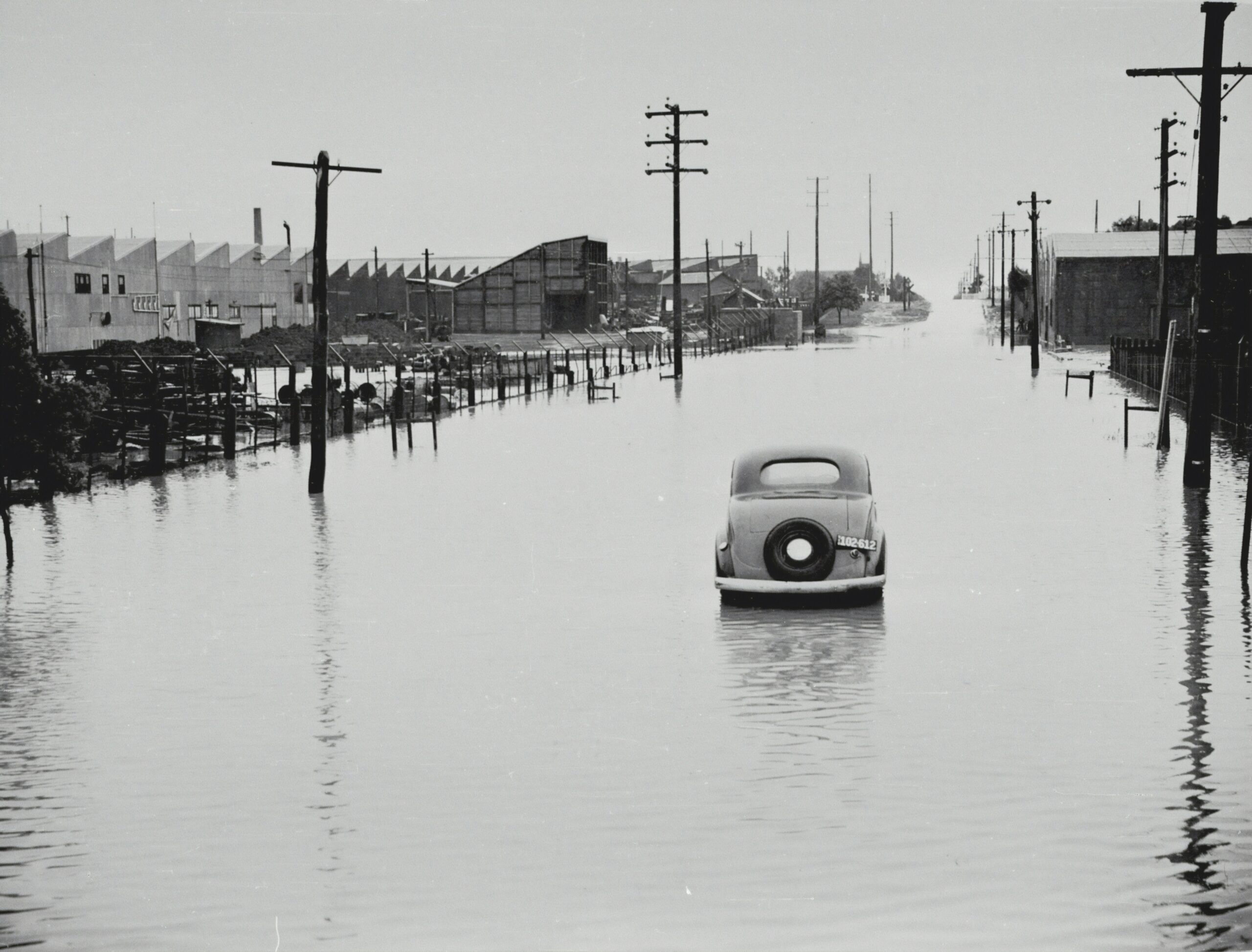“`html
Introduction to the Pimpri-Chinchwad Floods
The Pimpri-Chinchwad area of Pune has recently experienced a significant natural disaster in the form of severe floods. These floods have had a profound impact on the local community, leading to widespread disruption and challenges. The timeline of events that culminated in these devastating floods is crucial for understanding the severity and unpredictability of this natural calamity.
The weather forecasts had predicted heavy rainfall in the region, but the intensity and volume of rain surpassed expectations, leading to alarming water levels in a short span of time. The early warnings issued by meteorological agencies were critical in providing residents with a heads-up, yet the rapid escalation left many struggling to safeguard their homes and belongings.
As the rain continued unabated, the geographical and infrastructural vulnerabilities of the Pimpri-Chinchwad area were starkly exposed. Water bodies spilled over their banks, inundating residential areas, commercial establishments, and public spaces. Roads turned into rivers, posing significant challenges for emergency response and relief operations.
Beyond the immediate physical damage, the floods have also brought economic activities to a standstill, affecting businesses and livelihoods. The local administration has been working tirelessly to manage the crisis, coordinating evacuation efforts, and providing shelter and necessities to those displaced.
This disaster underscores the gravity of the situation in Pimpri-Chinchwad, necessitating a closer examination of both the immediate and long-term implications of such an event. The following sections will delve deeper into specific aspects of the floods, including the emergency response, the environmental impact, and the strategies being adopted for post-flood recovery and future disaster preparedness. By understanding these elements, we can appreciate the full scope of the challenges faced by the community and the resilience displayed in the aftermath of this crisis.
Geographical and Climatic Factors
Pune and Pimpri-Chinchwad, located in the western part of India, experience a complex interplay of geographical and climatic factors that contribute to their susceptibility to flooding. The region is primarily influenced by the southwest monsoon, which brings substantial rainfall from June to September each year. This seasonal influx of rainwater, while vital for agriculture and replenishing water resources, often leads to flooding when it exceeds the absorption capacity of the land and water bodies.
One significant feature of the area is the presence of several river systems, including the Mula, Mutha, and Pavana rivers. These rivers, while essential for the region’s water supply, can overflow during heavy rainfall, leading to inundation of surrounding areas. The topography of Pune and Pimpri-Chinchwad further exacerbates this issue. The region comprises a mix of undulating terrain, valleys, and river basins, which can channel and concentrate rainfall into narrower areas, causing streams and rivers to swell rapidly.
Urbanization is another critical factor that intensifies flood risks in Pune and Pimpri-Chinchwad. Over the past few decades, rapid and often unplanned urban expansion has led to encroachment on natural water bodies and floodplains. This development reduces the land’s natural ability to absorb rainwater and increases surface runoff. Impervious surfaces, such as roads, pavements, and buildings, prevent the infiltration of rainwater, thus overwhelming drainage systems and contributing to flood conditions.
Furthermore, inadequate infrastructure and inefficient drainage systems compound the flooding issue. The existing stormwater drainage network in many parts of Pune and Pimpri-Chinchwad is outdated and unable to handle the volume of water during heavy monsoon seasons. Blockages due to debris and lack of regular maintenance further reduce the system’s capacity to manage floodwaters effectively.
By understanding these geographical and climatic factors, stakeholders can better appreciate the complexity of flood management in Pune and Pimpri-Chinchwad. It underscores the need for integrated planning, improved infrastructure, and sustainable urban development to mitigate flood risks and enhance the region’s resilience to such natural disasters.
Impact on Infrastructure and Public Services
The recent floods in Pimpri-Chinchwad, Pune have had a profound impact on the region’s critical infrastructure. Vital roads and bridges have suffered significant damage, rendering them impassable and creating major transportation bottlenecks. The deluge has washed away key stretches of road, compromising connectivity within the city and to neighboring areas. Heavily trafficked routes, integral for daily commutes and essential services, are currently unusable, exacerbating the logistical challenges faced by residents.
Public utilities have also not been spared. The inundation has disrupted the functioning of water supply systems, leaving many areas without access to clean drinking water. The sanitation infrastructure has been overwhelmed, posing severe public health risks. Furthermore, power outages have been frequent due to damage to electrical substations and distribution lines, affecting both residential areas and industrial operations.
The floodwaters have also infiltrated public buildings, including healthcare facilities and educational institutions. Hospitals and clinics, already stretched due to the ongoing health crisis, are now grappling with additional challenges such as waterlogging, equipment damage, and difficulties in maintaining hygiene and safety standards. Educational institutions have either been closed or repurposed as emergency shelters, leading to a disruption in the academic schedule and impacting students’ learning continuity.
Transport services have come to a virtual standstill, with public and private vehicles struggling to navigate the waterlogged streets. The public transportation system, including buses and local trains, has been severely disrupted, affecting the daily mobility of the workforce and the larger populace. Rescue operations are ongoing, but the magnitude of infrastructure damage is hampering their efficiency.
In essence, the floods have laid bare the vulnerabilities of Pimpri-Chinchwad’s infrastructure and public services, highlighting the need for resilient urban planning and emergency preparedness to mitigate such calamities in the future.
Humanitarian Concerns and Relief Efforts
The recent Pimpri-Chinchwad floods in Pune have generated profound humanitarian concerns, significantly affecting the lives of residents. Displacement is one of the most immediate issues resulting from the floods, as thousands found themselves suddenly without shelter. The loss of life is another somber reality, with many fatalities and missing persons reported due to the catastrophic floods.
In addition to these personal tragedies, the floods have caused substantial property damage. Homes and businesses have been submerged or washed away, leading to financial losses for individuals and the local economy. Critical infrastructure, such as roads and bridges, has also been severely impacted, complicating both the immediate rescue operations and long-term recovery efforts.
In response to this dire situation, a suite of relief efforts have been mobilized by various stakeholders. Government agencies were quick to declare a state of emergency and roll out evacuation plans. Temporary shelters were established to provide immediate housing to the displaced, while food distribution centers ensure that basic nutritional needs are met. Moreover, medical camps have been set up to attend to the injured and prevent the outbreak of flood-related diseases.
Non-Governmental Organizations (NGOs) have supplemented these efforts by offering specialized services. These include psychological support for traumatized flood victims and logistical assistance in transporting relief supplies to hard-to-reach areas. Community organizations and local volunteers have also played an instrumental role, leveraging their local knowledge and networks to assist in search and rescue operations.
Key initiatives, such as providing clean drinking water and sanitation facilities, have been paramount in the ongoing relief operations. Ensuring that affected individuals receive timely and adequate support remains a priority, as efforts continue to mitigate the long-term impacts of the disaster. The collaborative approach involving government bodies, NGOs, and community members underscores the shared responsibility in addressing the humanitarian crisis brought on by the Pimpri-Chinchwad floods in Pune.
Government Response and Red Alert Issuance
The government response to the recent flooding in Pimpri-Chinchwad has been swift and systematic, aimed at mitigating the immediate risks and ensuring public safety. Central to this response was the declaration of a red alert in Pune, a move that signifies the highest level of warning in emergency management. The issuance of a red alert is not taken lightly and follows stringent criteria defined by meteorological and disaster management authorities.
A red alert is declared when severe weather conditions are imminent or already occurring, posing a significant threat to life and property. In the case of Pimpri-Chinchwad, the decision was based on continuous heavy rainfall predictions, rising water levels in rivers, and the potential for widespread flooding. The criteria include the intensity and duration of rainfall, hydrological conditions, and previous instances of flooding, all of which warrant a high-alert situation.
Upon the issuance of the red alert, a series of emergency measures were promptly enacted by local authorities. These measures included the activation of disaster management teams, who coordinated with both state and central agencies to streamline rescue operations and resource deployment. Evacuation orders were given to residents in highly vulnerable areas, with temporary shelters and relief centers set up to accommodate displaced individuals. Additionally, efforts were made to fortify critical infrastructure such as hospitals, power plants, and communication networks to ensure they remain operational during the crisis.
Local administration also employed technology to manage the situation effectively, utilizing real-time data and predictive analytics for better decision-making. Public communication was prioritized, with regular updates provided through various channels to keep the populace informed about evolving conditions and safety instructions. Supported by coordinated rescue and relief operations, these actions collectively aimed to mitigate the damage and safeguard the lives of those affected by the flooding.
Preventative Measures and Long-Term Solutions
The challenges posed by the frequent occurrence of flooding in Pimpri-Chinchwad necessitate a comprehensive strategy encompassing both immediate preventative measures and long-term solutions. To mitigate the risks of future floods, an effective flood management system must be a priority. This entails the construction of robust drainage systems, embankments, and levees that can efficiently channel and control floodwater, preventing overflow into residential and commercial areas.
Urban planning improvements play a critical role in reducing flood risks. Conscientious city planning and development regulations should ensure that new constructions are not situated in flood-prone areas. Existing infrastructure needs to be retrofitted to withstand heavy rainfall and potential flooding. Implementing green infrastructure like rain gardens, permeable pavements, and green roofs can absorb and slow down the rate of water runoff, thereby reducing flood risks. These natural solutions often prove cost-effective while contributing positively to the urban ecosystem.
Beside physical infrastructures, community awareness programs are vital in fostering a culture of preparedness and responsiveness among residents. Public education campaigns can inform residents about the measures they can take to protect themselves and their properties in the event of a flood. Establishing community response teams equipped to act swiftly during emergencies can significantly alleviate the chaos and damages typically associated with floods.
Government policies and infrastructure projects aimed at long-term flood mitigation are integral to a sustainable flood management strategy. Collaboration between local government, environmental agencies, and urban planners is essential for developing and enforcing policies that address urbanization impacts on water management. Investing in advanced early warning systems and emergency response capabilities will ensure timely actions can be taken, minimizing the potential damages.
Such integrated efforts, encompassing technological, structural, and educational dimensions, are crucial for building resilience against floods in Pimpri-Chinchwad. By prioritizing smarter urban planning, robust flood management infrastructure, and community-oriented strategies, the region can better navigate the challenges posed by frequent flooding and safeguard its inhabitants from future threats.
Case Studies of Other Flood-Prone Regions
Flood mitigation and management are critical areas of focus for numerous regions worldwide, given the increasing frequency and intensity of such natural events. Effective strategies and solutions implemented in these regions offer valuable insights that can be adapted for the Pimpri-Chinchwad area in Pune.
One exemplary case is the Netherlands, a country renowned for its innovative approach to flood management. The Dutch have implemented an integrated system known as the “Room for the River” program. This initiative entails creating additional space for rivers to prevent overflow by relocating dikes and deepening riverbeds. Furthermore, their comprehensive water management policy incorporates advanced forecasting systems and effective emergency protocols. The success of this project demonstrates the importance of combining structural and non-structural measures to enhance flood resilience.
Similarly, Venice, Italy, has employed a high-tech solution called the MOSE project to safeguard the city from rising sea levels and storm surges. The MOSE system comprises a series of mobile barriers that temporarily isolate the Venetian Lagoon from the Adriatic Sea during high tides. This innovative engineering marvel demonstrates the potential of technology-assisted solutions in combating flood risks, particularly in areas with significant historical and cultural heritage.
In Asia, Japan’s flood management strategies emphasize meticulous urban planning and public awareness. The country employs large underground discharge channels, as seen in Tokyo’s Metropolitan Area Outer Underground Discharge Channel (G-Cans). This large-scale infrastructure diverts excess water from heavy rainfall and typhoons, thereby protecting the urban landscape. Japan’s approach also underscores the critical role of community engagement and education in disaster preparedness.
In conclusion, while each region employs distinctive methods tailored to their unique geographical and climatic conditions, common elements of success include advanced technology, comprehensive planning, infrastructure investment, and public involvement. Adopting similar strategies could prove beneficial for the Pimpri-Chinchwad area, enhancing its capacity to cope with and mitigate the impacts of future flooding events.
Community Resilience and Recovery
In the aftermath of the devastating floods in Pimpri-Chinchwad, the resilience of the community has shone through as a beacon of hope. The floodwaters may have receded, but the indomitable spirit of the residents remains unshaken. Stories of recovery and rebuilding efforts highlight the innate strength and solidarity among the people of Pimpri-Chinchwad.
One such story is that of local volunteers who quickly mobilized to form rescue teams. These volunteers worked tirelessly to provide immediate assistance to those affected, showcasing an incredible example of community spirit. Their efforts were not confined to emergency response alone; they also played a pivotal role in the subsequent rebuilding process. From distributing essential supplies to helping reconstruct damaged homes, these individuals displayed an unyielding commitment to their neighbors.
Rebuilding the community has been a colossal task, requiring both logistical and emotional support. Many residents have come together to establish communal kitchens, ensuring that nobody goes hungry during these trying times. Local businesses have also stepped up to contribute resources and manpower, thereby reinforcing the community’s unified response.
In addition to physical rebuilding, mental health support has been a crucial aspect of recovery. Counseling services, facilitated by both governmental and non-governmental organizations, have been offered to help flood victims cope with the emotional trauma. These services have been instrumental in fostering a sense of normalcy and stability, allowing the affected individuals to begin the process of healing.
The Pimpri-Chinchwad floods serve as a poignant reminder of the importance of preparedness and solidarity. While the immediate priority is recovery, there is a growing focus on implementing long-term measures to mitigate future risks. Community training sessions on disaster preparedness and the development of robust early warning systems are pivotal steps towards building a more resilient Pimpri-Chinchwad.
Through these collective efforts, the community demonstrates that while natural disasters may test our resolve, they also provide an opportunity to showcase the strength of our collective spirit. The Pimpri-Chinchwad community’s response to adversity underscores the vital importance of unity, preparedness, and unwavering determination in overcoming challenges.



